Introduction
Dive into the world of catfish farming, where innovation and expertise create thriving aquatic ecosystems.
Catfish farming has emerged as a lucrative and sustainable business opportunity in recent years. With an increasing demand for this versatile and delicious freshwater fish, farmers worldwide are leveraging their knowledge and technology to create thriving aquatic ecosystems. In this comprehensive guide, we will walk you the secrets to successful catfish farming, from setting up a farm to ensuring the health and growth of your fish.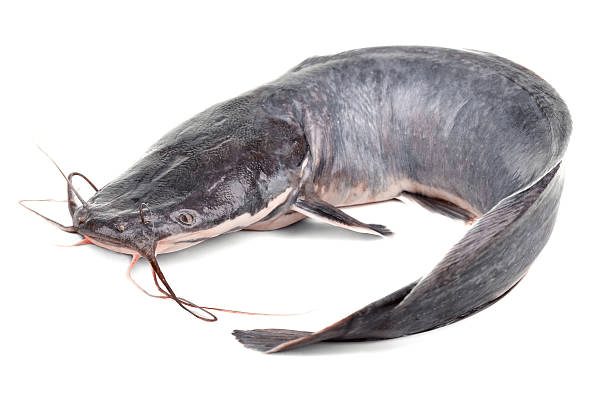
Catfish are also known as Siluriformes have different species such as flathead catfish, blue catfish, channel catfish, Heteroclarias, Clarias spp, and many more up to over 300 species. Catfish Business is an easy and flexible agriculture-based business that can also be profitable.
Catfish are considered to be freshwater species and they are found in the coastal world regions. They are easy to rear especially in the climatic region that is warm.
Catfish are carnivorous that feeds on insects, worms, newts, and others. They may also serve as prey to bigger mammals, reptiles, fishes, etc. depending on the size of both the prey and the predator.
Catfish can spawn up to 100 eggs at a time which later hatch within a period of one week. Female catfish lay their egg close to the surface of the water which is safe from other aquatic animals dwelling at the bottom of the water.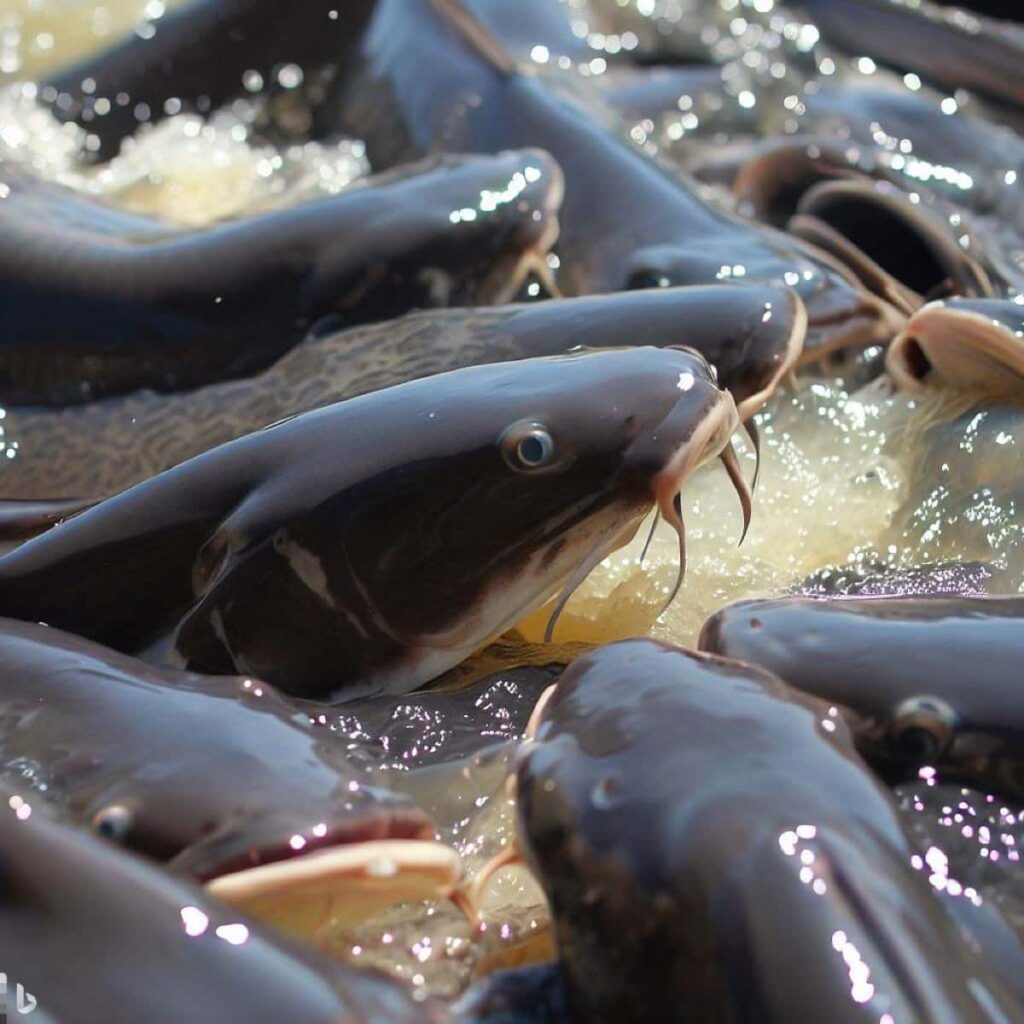
Catfish are a source of protein as well as a healthy and delicious source of seafood. Catfish Business is an easy and flexible agriculture-based business that can also be profitable.
Catfish Business can be done anywhere if you have a suitable place and you can either take care of the protein needs of your own family or sell it to make more profit.
The type of catfish you want to grow depends on what your target market is, what your feeding plans are, and what size pond and area you are thinking about setting up your farm on.
The pond can be an earthen pond, concrete pond, or plastic container that you can use to start at your backyard depending on your capability.
Steps to Consider when Starting Catfish Business
Type of species
Decision on what species of catfish you want to grow depends on the size of your pond, farm, and the target market. If you want to start a large catfish farm; Catfish Business, you must have a large amount of capital. However, a small farm for Catfish Business will need fewer amounts of land and smaller capital. If you want to start small, you might begin with a small pond or you can start from a pond that you already have.
Choosing the Right Catfish Species
Selecting the appropriate catfish species for your farm is crucial. Different species have varying growth rates, feeding habits, and environmental requirements. Consider these popular catfish species for a successful farming venture:
Channel Catfish (Ictalurus punctatus)
- Widely considered the most suitable species for farming due to its adaptability.
- Fast growth rate and excellent feed conversion ratio.
- Tolerant of different environmental conditions and diseases.
- Thrives in both pond and tank systems.
Blue Catfish (Ictalurus furcatus)
- Known for their large size and rapid growth.
- Ideal for commercial farming due to their market demand.
- Requires spacious ponds or tanks to accommodate their size.
African Catfish (Clarias gariepinus)
- Native to Africa and highly adaptable to a variety of climates.
- Exhibits robust growth rates and efficient feed conversion.
- Well-suited to a wide range of farming systems.
A larger pond will yield more profit per pond and can grow larger fish. A catfish pond must have a smooth bottom, be clean, and have a gradual slope. Catfish ponds must have 20%-30% clay in the soil by weight to minimize seepage. You should allow excess water to drain out of the pond. Make sure that your spillways allow 1-2 inches of water to run off at a time.
Your pond depth should be 3 feet at the shallow end and 8 feet at the deep end. Too shallow of a pond may encourage weed growth.
Setting Up the Catfish Farm
Creating a suitable environment for your catfish ensures their optimal growth and health. Consider the following factors when setting up your farm:
Pond or Tank Selection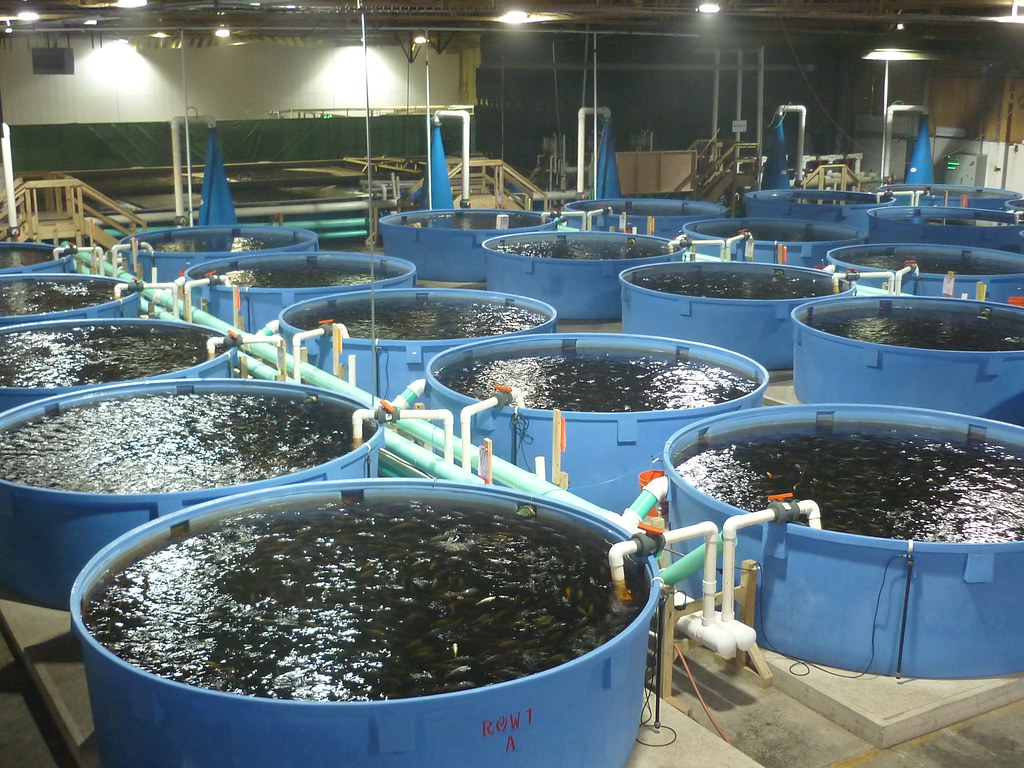
- Evaluate the available land and choose between earthen ponds or tanks based on your resources, location, and target market.
- Earthen ponds are cost-effective and provide natural conditions, while tanks offer more control over water quality and disease management.
Water Quality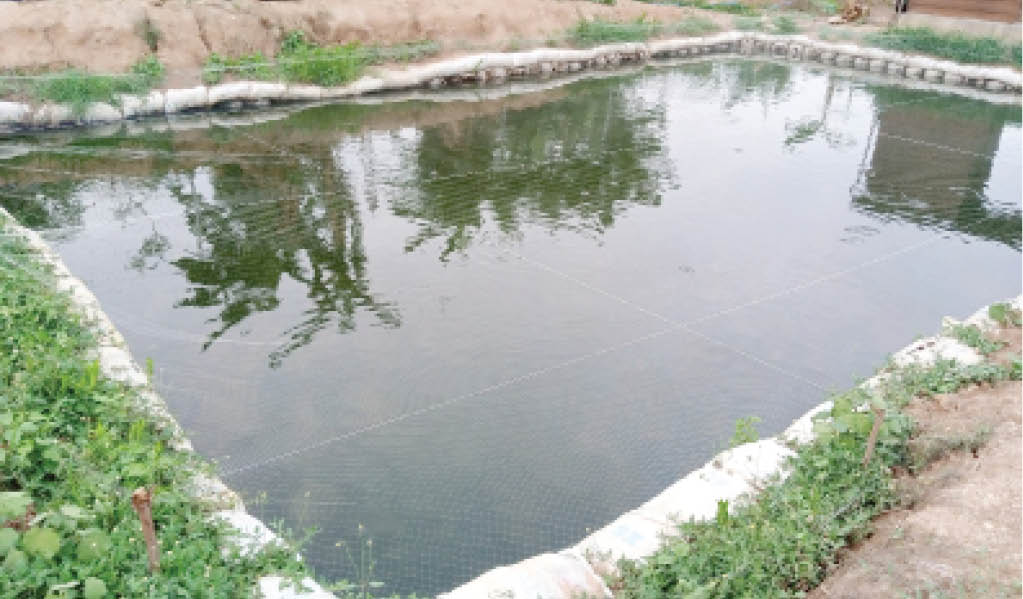
- Check water sources for pH, dissolved oxygen, and hardness.
- Ensure proper filtration and aeration systems to maintain water quality.
- Monitor ammonia and nitrate levels regularly to prevent water contamination.
Stocking Density
- Balance the number of fish per unit area to optimize growth.
- Overstocking can lead to stress, disease outbreaks, and poor fish health.
- Consider consulting with an aquaculture expert to determine the ideal stocking density for your farm.
Feeds and water for your catfish
your catfish must be properly fed and your feed should contain proper nutrients which have methionine, arginine, and lysine. Increase your catfish feed as they grow so that they will not be malnourished. Been freshwater water animal, poor water can kill your catfish. Your source of water should be from borehole and rainwater which are the best source.
Nutrition and Feeding Practices – Catfish Farming
A nutritious and well-balanced diet is essential for the growth and development of catfish. Implement the following practices to optimize their feeding:
Commercial Feeds
- Utilize high-quality, commercially formulated feeds that meet the nutritional requirements of catfish.
- Ensure the feed contains essential nutrients, vitamins, and minerals.
- Adjust feeding rates based on the size and appetite of the fish.
Supplemental Feeding
- Incorporate natural food sources, such as plankton, worms, and insects, into the catfish diet.
- Farm-grown feed sources like duckweed and azolla can also supplement their nutrition.
- Monitor the availability and quality of natural food sources to avoid imbalances in the diet.
Feeding Techniques
- Employ a regular feeding schedule to establish consistent growth patterns.
- Feed the fish multiple times per day, ensuring all fish have access to feed.
- Monitor feeding behavior and adjust feeding rates accordingly.
Health Management and Disease Prevention – Catfish Farming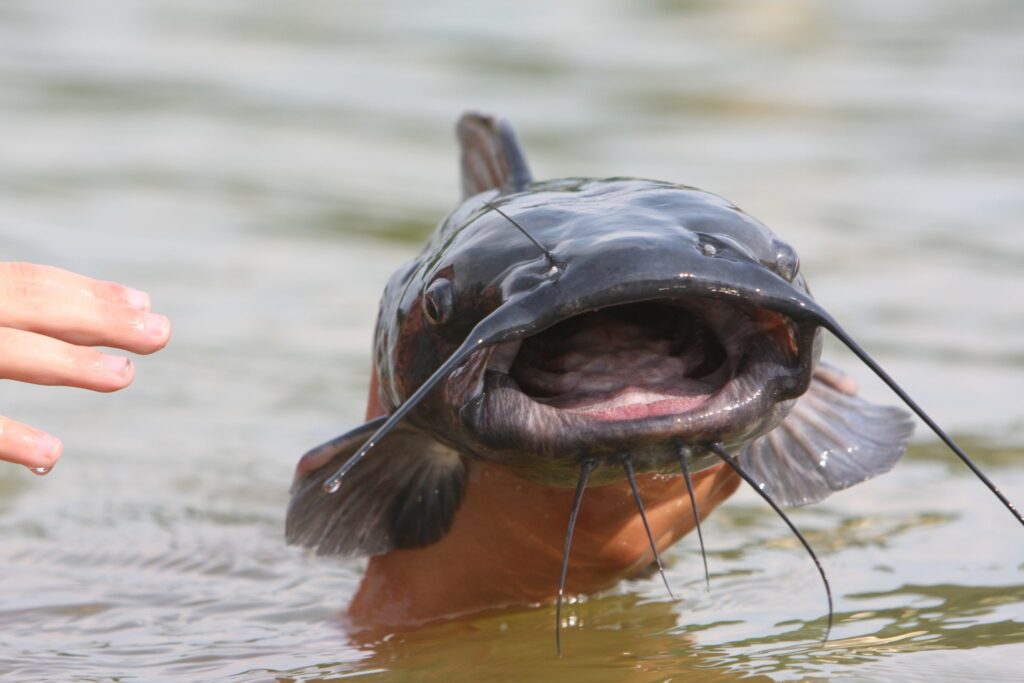
Catfish can also be infected like other animals, you must be on a watch out. When you observe any symptoms like an open sore, loss of colour, the red colour on the body, inactivity, not breathing well etc all these signs show that all is not well with your fish. This disease can be a fungal, parasitic, or bacterial infection. Disease outbreaks can lead to the loss of your catfish.
Maintaining the health of your catfish population is crucial to a successful farming operation. Follow these practices to manage their health effectively:
Regular Monitoring
- Conduct routine inspections to detect any signs of disease or unhealthy fish.
- Observe fish behavior, appetite, and physical appearance to identify abnormalities promptly.
Water Quality Control
- Consistently monitor and maintain optimal water quality parameters.
- Regularly test for ammonia, nitrate, pH, and dissolved oxygen levels.
- Implement effective filtration, aeration, and water treatment systems.
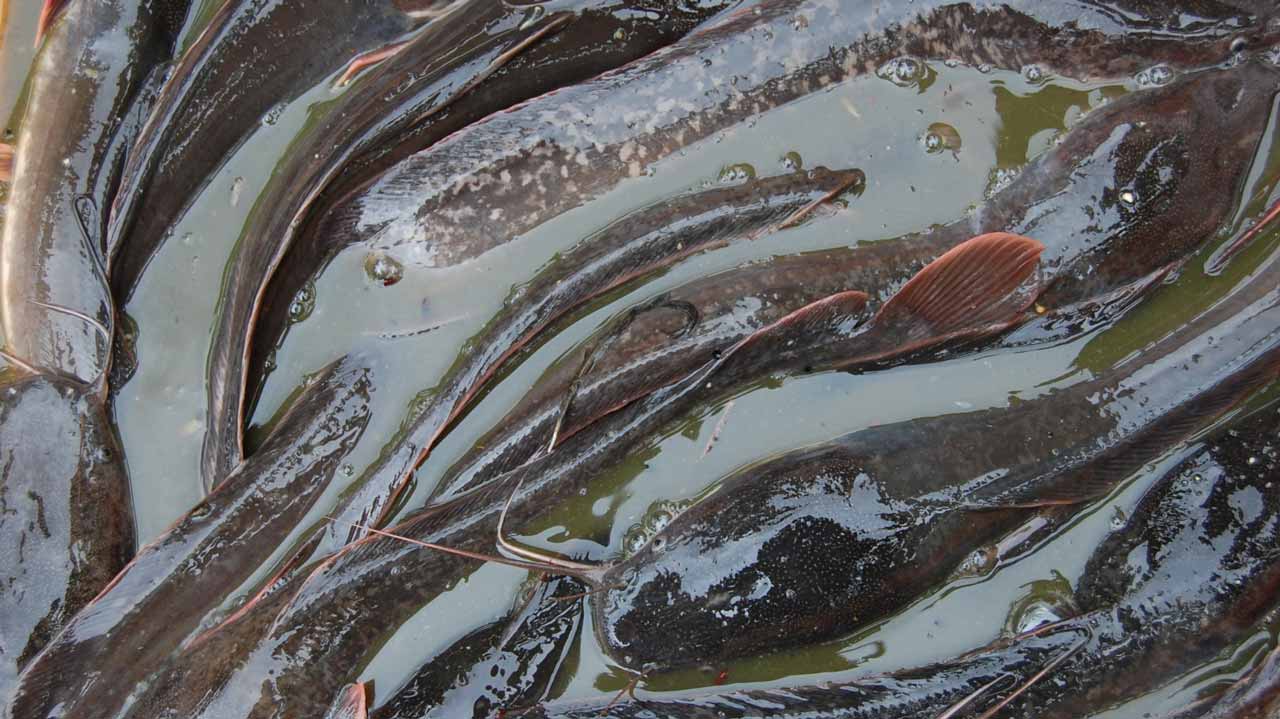
Catfish Farming Marketing
To start your marketing plan, determine what type of catfish you will focus on. If you decide to keep your catfish operation smaller, try targeting direct local customers in your area. Start with your relatives, friends, and family. Many customers are interested in buying fresh fish directly from the farm instead of buying frozen and packaged fish. Under very good conditions, Catfish Business is prominent to be very profitable technology-driven using mechanics.
Conclusion
“Delve into the world of catfish farming armed with the knowledge and expertise to create a thriving aquaculture venture.”
Catfish farming presents an exciting opportunity for individuals seeking a profitable and sustainable agribusiness venture. By carefully selecting the right species, creating an optimal farming environment, implementing proper feeding practices, and prioritizing health management, you can set the stage for success. Remember, understanding the nuances of catfish farming and staying updated on industry best practices is paramount. Now, it’s time to dive in and unleash your potential in the world of catfish farming!
DOWNLOAD FOR FREE – THE LOWEST PRICE FOR CATFISH FARMING TODAY
RECOMMENDED ARTICLES
- How to Start a Fish Farming In Nigeria – 6 Expert Tips for Successful Fish Farming In Nigeria
- Catfish Farming in Nigeria: A Lucrative Venture with Sustainable Potential Standard Catfish Business Plan
- Fish Farming For Beginners – 7 Comprehensive Factors To Consider And Benefits
- Small Scale Catfish Farming Business Plan And The Ideal
If you like, please share it. Sharing is usually caring.
